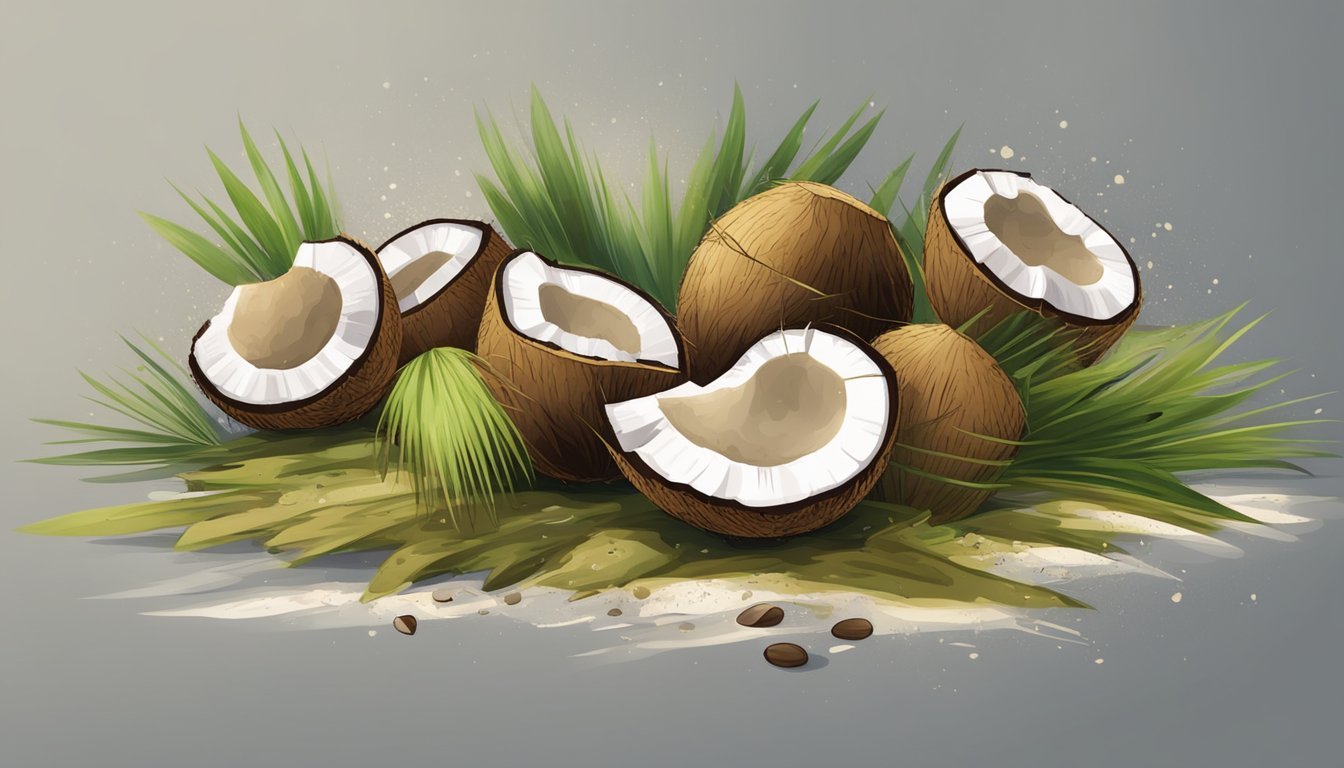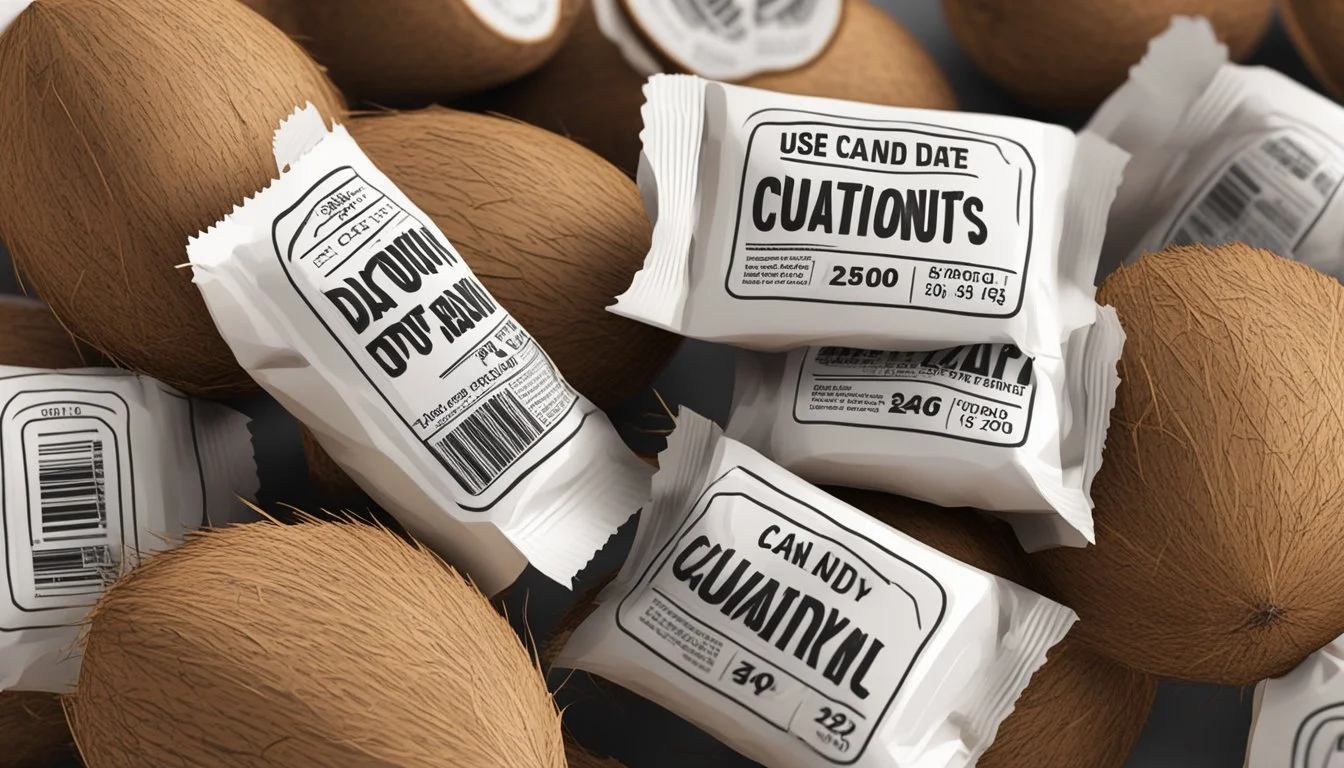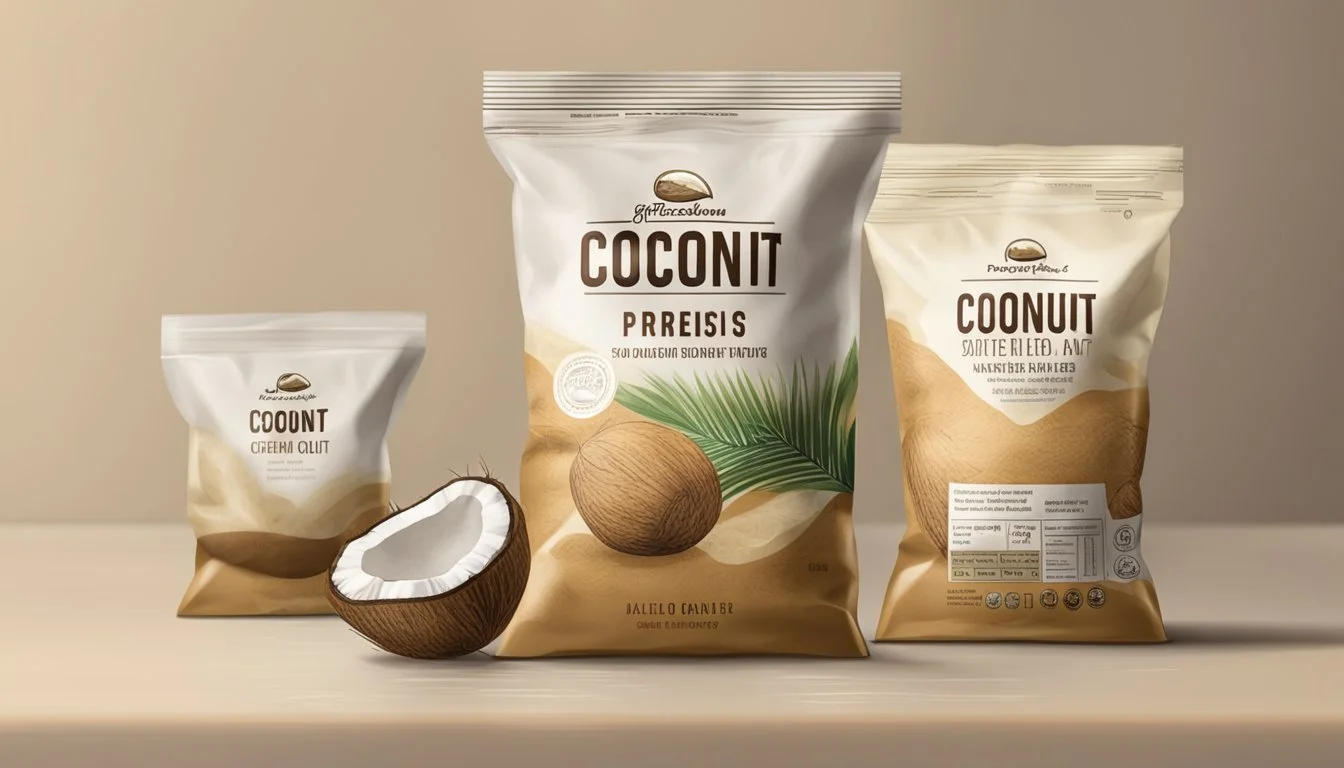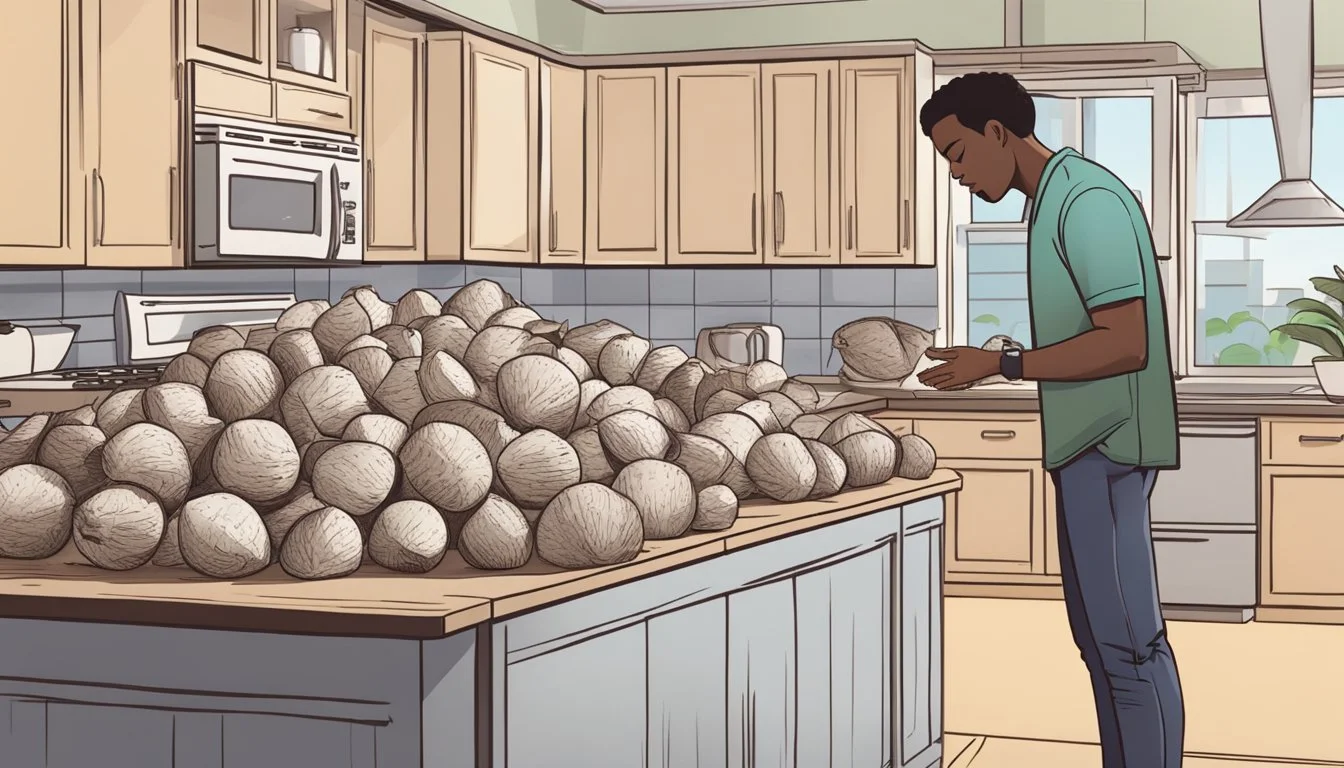Is it Safe to Use Expired Dried Coconut?
Understanding Shelf Life and Risks
When considering the use of expired dried coconut, consumers commonly wonder if it remains safe to consume after the listed expiration date. Dried coconut, known for its long shelf life, often retains its quality well beyond this date. It's essential to understand, however, that the safety and quality depend on how the coconut has been stored. If kept in an airtight container, away from moisture and heat, dried coconut can preserve its edibility for several months — and potentially up to 6 months — past its expiration date.
The integrity of dried coconut after its expiration date can often be assessed through texture, color, and smell before consumption. Fresh dried coconut typically possesses a white color, a mildly sweet fragrance, and a firm yet slightly chewy texture. Any deviations from these characteristics, such as discoloration, sour or rancid smell, or a brittle texture, may indicate spoilage. It's crucial to inspect the expired shredded coconut thoroughly before deeming it safe to consume.
Safe consumption of expired food products is a common concern, and dried coconut is no exception. Although expired dried coconut may not necessarily pose a health risk if stored correctly, the sensory qualities are the best indicators of its safety. Consuming dried coconut that has altered in appearance, smell, or taste is not recommended, as these changes can signal that the product is no longer suitable for consumption.
Understanding Expiration Dates
When considering the safety of consuming expired dried coconut, the reader must discern between actual spoilage and peak quality timelines. Expiration dates serve as a guideline, but they don't always equate to the moment food becomes unsafe.
Determining the True Shelf Life
The shelf life of dried coconut is contingent upon storage conditions. If kept in an airtight container and placed in a cool, dry environment, dried coconut can last:
Pantry: Up to 6 months
Refrigerator: 6-8 months
Freezer: 6-8 months
One must assess the product for signs of spoilage, such as changes in color or texture, since dried coconut may remain edible beyond these periods, provided it has been stored appropriately.
Expiration vs. Best Before Dates
Best before dates denote the period during which dried coconut is expected to retain its peak quality. Contrastingly, the expiration date indicates the end of the estimated shelf life but not necessarily when it becomes inedible. Dried coconut can often be safe for consumption past the best before date if:
No signs of spoilage are evident.
It has been stored in optimal conditions.
However, post-expiration, its quality—flavor, aroma, and texture—may diminish, even if it poses no health risks initially. Consumers should exercise judgment and prioritize food safety when using products beyond their stated dates.
Proper Storage Techniques
The key to maintaining the quality of expired dried coconut lies in the methods of storage utilized. Proper storage not only preserves the taste and texture but also ensures safety for consumption past the suggested dates.
Maximizing Freshness in the Pantry
In the pantry, one should store dried coconut in an airtight container to protect it from moisture and other contaminants. It is ideal to place the container in a cool, dry place away from direct sunlight. For added protection, the use of vacuum-sealed bags can minimize exposure to air, thereby preserving the coconut's shelf life and freshness.
Recommended pantry conditions: Cool (below 75°F) and dry
Storage containers: Airtight containers, vacuum-sealed bags
Extending Longevity in the Fridge and Freezer
For prolonged storage, placing dried coconut in the fridge or freezer can significantly extend its usability. In the fridge, one should keep the coconut in an airtight container or tightly sealed plastic bag. This protects it from absorbing odors and moisture from other foods. When storing dried coconut in the freezer, using freezer-safe bags or containers is crucial to prevent freezer burn.
Fridge storage:
Place in an airtight container or tightly sealed bag
Ensure the area is free of strong-smelling foods
Freezer storage:
Use freezer-safe airtight containers or bags
Label with date to track storage time
Visual and Sensory Indicators of Spoilage
The quality of expired dried coconut can often be determined by examining its color, texture, and smell—key sensory factors that indicate spoilage.
Color and Texture Changes
When assessing dried coconut for spoilage, one should look for discoloration or any dark spots that were not originally present. Fresh dried coconut typically has a uniform white or off-white color, so any variations may suggest spoilage. Regarding texture, a fresh, quality dried coconut should have a slightly firm to the touch and a bit of moisture feel. A coconut that has become hard, excessively dry, or shows signs of mold may be spoiled.
Odor and Taste Assessment
The smell of dried coconut is another critical indicator. Fresh dried coconut has a sweet, mildly nutty aroma. An off smell or rancid smell suggests that the coconut has gone bad and should not be used. When it comes to taste, expired dried coconut that has spoiled will often taste sour or rancid, deviating from its characteristically mild sweetness. It is important to note that even if the dried coconut passes a visual exam, a spoilage determination should also involve olfactory and gustatory confirmation.
Health and Safety Considerations
When considering the safety of using expired dried coconut, it is essential to understand the potential health risks and best practices to prevent food poisoning.
Risks Associated with Using Expired Coconut
Expired coconut flakes can pose several health risks if they show signs of spoilage. Food poisoning is the primary concern, as mold or bacteria growth on expired coconut is possible. It is not safe to eat expired coconut if it exhibits:
Unpleasant odors
Discoloration
Mold growth
Symptoms of food poisoning may manifest as stomach pain, vomiting, diarrhea, and nausea. These symptoms can be severe and require medical attention, especially in individuals with weakened immune systems or allergies to molds and certain bacteria.
Preventing Food Poisoning
To prevent food poisoning from dried coconut, one should adhere to the following storage guidelines:
Proper Storage Conditions: Ensure dried coconut is stored in an airtight container and kept in a cool, dry location.
Shelf Life Awareness: Generally, dried coconut can maintain its quality for up to 6 months under optimal storage conditions.
Inspection Before Use: Prior to utilizing dried coconut, one should check for any signs of spoilage as mentioned above.
By following these safety precautions and using thorough inspection methods, one can minimize the health concerns associated with consuming expired dried coconut and promote food safety.
Usage in Cooking and Baking
When incorporating expired dried coconut into cooking and baking, the focus should be on identifying suitable recipes and considering alternatives if the coconut's quality is compromised.
Suitability for Different Recipes
One can use expired desiccated coconut with caution. It can be a versatile ingredient in various recipes, including baked goods, curries, and cakes. For instance, they can mix it into granola with oats and honey, toasting it to enhance its flavor. Expired coconut may also be used as a topping for curries to add texture, relying on the heat to balance any subtle taste changes. Baking with expired coconut is feasible; however, the results depend on the recipe's reliance on the coconut flavor. Cookies and cakes with coconut as a main flavor component might not yield the desired taste if the coconut's freshness is questionable.
Granola: Mixing with oats and honey, and toasting
Curries: Using as a crunch-enhancing topping
Cakes and Cookies: Careful consideration of the recipe's reliance on coconut flavor
Alternatives to Spoiled Coconut
When the expired dried coconut shows signs of spoilage, such as a rancid smell or mold, it is not safe for consumption and should be discarded. In such cases, one can resort to alternatives to maintain the integrity of the dish.
Coconut Cream or Milk: For moistness in bakes or creamy texture in dishes
Fresh Grated Coconut: For a more intense flavor and texture in recipes
Other Nuts or Seeds: To substitute the crunch and fat content in recipes
One should employ these alternatives to ensure the success of their cooking or baking endeavors, even when the original coconut ingredient is not viable.
Preserving Coconut Products
Proper storage methods are essential for extending the shelf life of dried coconut products. They ensure quality and safety, which are vital when considering the use of expired items.
Utilizing the Freezer for Long-Term Storage
Freezing dried coconut is an effective way to preserve its freshness for extended periods. Dried coconut can be stored in the freezer for approximately 6-8 months. To prevent freezer burn, one should place the coconut in a sealed container or freezer-safe bag before freezing. It’s important to squeeze out as much air as possible to minimize exposure to moisture which can lead to spoilage.
The Role of Airtight Containers
Airtight containers are crucial for preserving the quality of dried coconut when stored at room temperature or in the refrigerator. Such containers shield the coconut from environmental factors which can decrease its shelf life. Here is how to properly store dried coconut using airtight containers:
Transfer the coconut to an airtight container immediately after opening the original packaging.
Store the container in a cool, dark place away from direct light or heat sources.
By following these specific storage practices, the consumer can contribute to the longevity and edibility of dried coconut products.
Beneficial Properties of Coconut
The coconut is a versatile fruit that offers a range of health benefits due to its nutritional content and can easily be incorporated into a healthy diet.
Nutritional Value of Coconut
Coconuts provide a significant amount of vital nutrients. They are particularly known for their high fiber content, which can aid digestion and promote gut health. Additionally, they contain healthy fats known as medium-chain triglycerides (MCTs), specifically found in coconut oil, that can support weight management and heart health. Coconuts are also a source of vitamin C, a powerful antioxidant that plays an essential role in immune function.
Fiber: Supports digestive health and may help regulate blood sugar levels.
Healthy Fats: MCTs contribute to energy production and may improve cholesterol levels.
Vitamin C: Essential for the growth, development, and repair of body tissues.
Incorporating Coconut into a Healthy Diet
Integrating coconut into one's diet is a straightforward way to take advantage of its healthful properties. Coconut water is a hydrating beverage loaded with electrolytes, making it a great thirst-quencher after exercise. Coconut oil can be used in cooking and baking as a substitute for other fats, adding a light coconut flavor and boosting the intake of MCTs. It is important for individuals to consider the caloric content of coconut products to maintain balanced eating habits.
Coconut Water: A natural hydrator abundant in electrolytes.
Coconut Oil: Can be used as a cooking oil, offering a unique flavor and health benefits.
Practical Tips and Tricks
When assessing whether expired dried coconut is safe to use, one should prioritize proper evaluation alongside inventive culinary applications. By employing a few practical tips and tricks, one can safely determine the usability of dried coconut past its expiration date and discover alternative uses that may enhance a variety of dishes.
Performing a Taste Test Safely
Before using expired dried coconut, it's crucial to perform a taste test safely. One should first inspect the coconut visually and sniff for any off-odors. If the coconut passes the initial inspection, they may proceed to taste a small amount. If the flavor is noticeably off or unpleasant, it should not be used. However, if the coconut tastes acceptable, it may still be suitable for consumption. Type of packaging and preservatives can impact how long shredded coconut lasts; well-sealed packaging can preserve freshness for longer periods.
Creative Uses for Aging Coconut
For coconut that is nearing or slightly past its expiration date, one can still apply inventive uses, preventing unnecessary waste:
Granola: Mix aging coconut with oats, nuts, and a sweetener such as honey, then toast in the oven. This process can rejuvenate less fresh coconut.
Savory Dishes: Add slightly aged coconut as a topping for savory dishes to impart an exotic flavor and texture. The heat from the dish may help in enhancing the coconut's taste.
Smoothies: Incorporate coconut into smoothies for an added tropical twist. The blending process can integrate the coconut's flavor well, even if it's not at peak freshness.
In conclusion, by examining expired dried coconut meticulously and employing it judiciously in suitable dishes, one can extend its culinary utility and ensure safe consumption.









